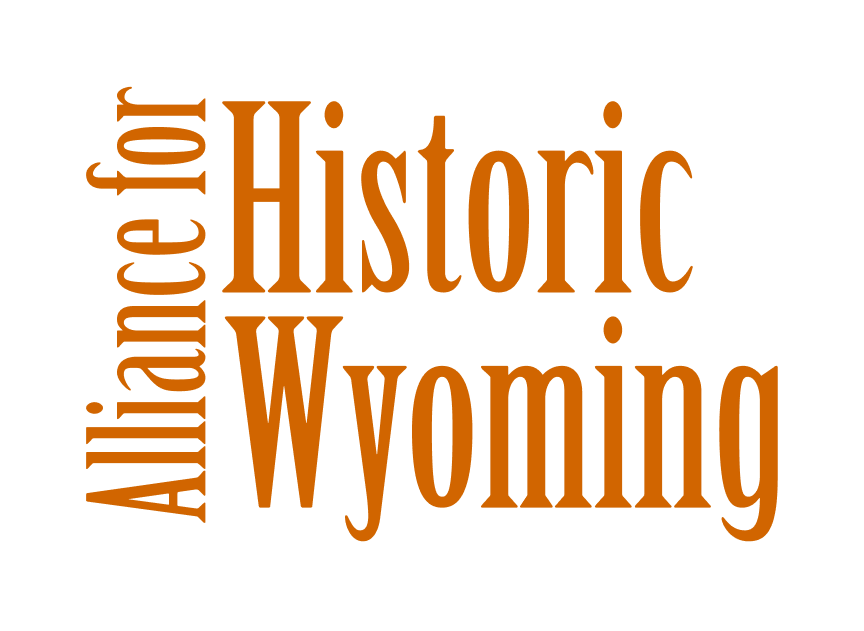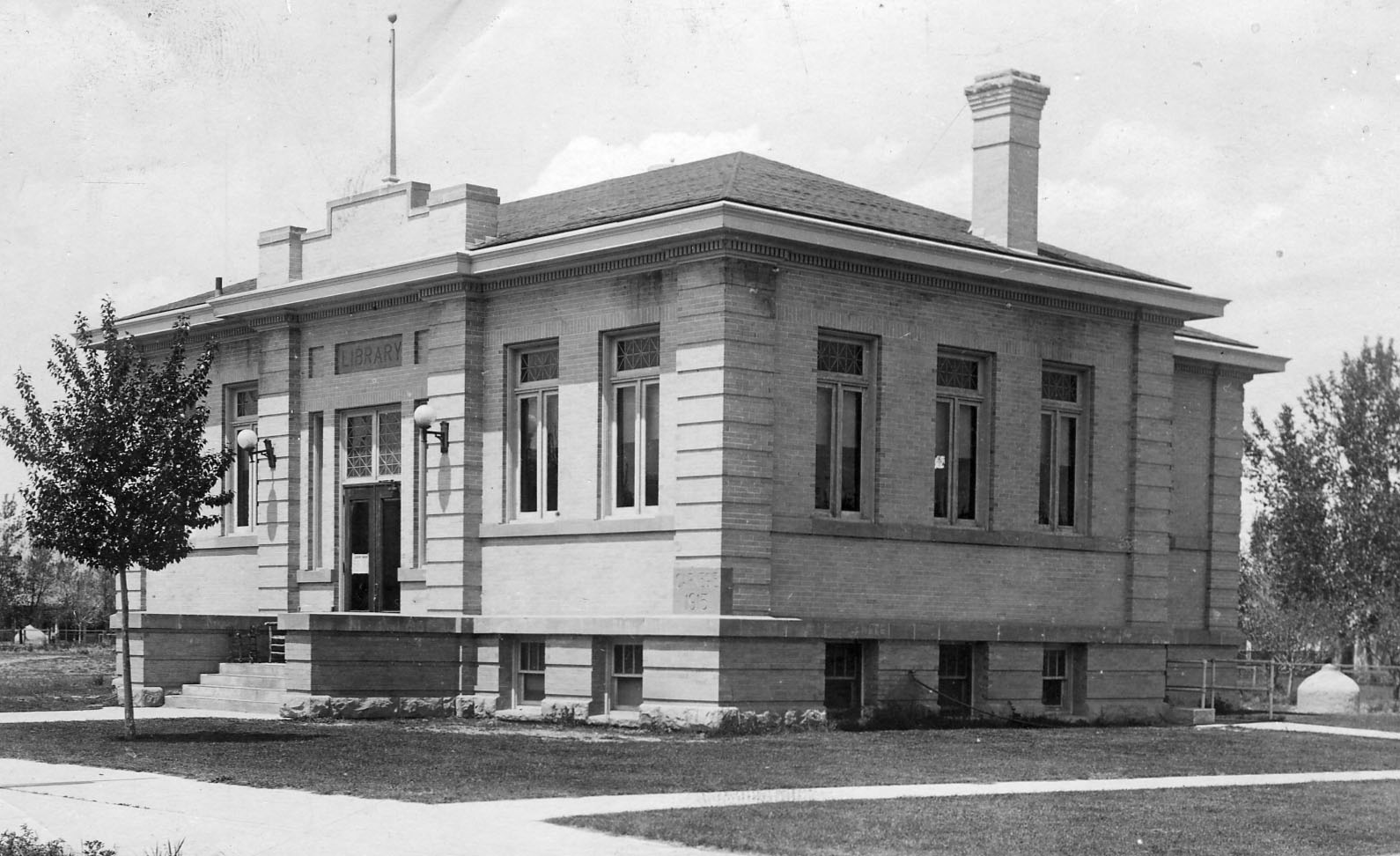By Robert Galbreath
August 10, 2016
*The following article based on an article published by WyoHistory.org.
Northeast of the present day town of Torrington, Wyoming, and a mile over the state line in Nebraska, is the Sheep Creek Cemetery that once served the community of Empire, Wyoming. Empire was founded in 1908 by African American settlers who came from Nebraska to build a racially self-sufficient, politically autonomous community in the Equality State. Empire thrived for about a decade, but vanished from the map in the mid-1920s. The Sheep Creek Cemetery, located on a small rise along Henry Road beneath windswept sandstone bluffs, is the only physical reminder that Empire existed. Outside of the well-maintained cemetery proper, beyond a freshly painted fence, segregated by a hayfield, are the bodies of two unidentified African American boys who lived in Empire.
Empire was an outpost of the mass migration of African Americans who fled the racial unrest and poverty that characterized the American South in the decades following the Civil War. They sought new opportunities on the western plains recently opened to settlement by the Homestead Act of 1862. In the 1870s, around 25,000 black settlers flooded into Kansas to take advantage of a progressive state constitution that provided land to settlers regardless of their race. The African American settlers in Kansas came to be known as the “Exodusters.” Exodusters soon spread beyond Kansas, and formed communities in Oklahoma, the Dakotas, Colorado, and eventually Empire, Wyoming. (1)
Quite a few of the Exoduster settlements were organized, communal efforts. African American activists in the Exoduster movement believed that autonomous, economically self-sufficient communities on the western plains offered African Americans freedom from the racial oppression of the South. In separate communities, African Americans could build their own governments, schools, businesses, and achieve a level of political independence in late 19th century America. Edward P. McCabe, a black politician from New York, founded the community of Langston City on land that had been appropriated from Native Americans in the new Territory of Oklahoma. McCabe echoed the sentiment of the Exodusters, writing in 1892 that “Langston City is a Negro City, and we are proud of that fact. Her city officers are all colored. Her teachers are colored. Her public schools furnish thorough educational advantages to nearly two hundred colored children.” (2)
Wyoming seemed an unlikely place for African Americans to build a community at the turn of the 20th century. African Americans in the state were an isolated minority in a sea of whiteness. The Cheyenne State Leader reported on June 13, 1911 that a mere sixty five out of 10,915 farms in the state were owned by “negro and other non-white farmers.” In the latter half of the 19th century, Wyoming was still perceived as a rugged, inhospitable desert suitable for cattle grazing rather than farming.
By the early 1900s, however, the federal government expended a large amount of money and infrastructure to replace the cowboy on the plains with the yeoman farmer. The United States Reclamation Service, formed in 1902, brought water to the arid prairie through a vast system of dams, reservoirs, and irrigation canals. In 1909, the federal government lured homesteaders west with the passage of the Enlarged Homestead Act that doubled claim sizes from 160 acres to 320. Agriculturalists at the time believed that science could turn prairie dust into productive soil with dryland farming techniques like deep plowing, crop rotation, and using drought resistant crops. (3) By the second decade of the 20th century, Wyoming had experienced a boom in homesteading, and the eastern plains embodied the Jeffersonian ideal of a democracy formed by small landholders. The Torrington Telegram boasted on January 2, 1908, that the land around Torrington was “suitable for the raising of all kinds of fruits, grains and vegetables” by an “active, business-like intelligent people, who maintain high ideals and strive to measure up to them.”
The founding American ideal of the yeoman farmer initially extended only to white men. Yet the descendants of slaves strove to embody these characteristics in the small town of Empire, Wyoming. Empire was founded near Torrington in 1908 by Charles Speese, who arrived on the Wyoming plains with his new bride, Rosetta. Three of Charles’ brothers – John, Joseph, and Radford – brought their families along and formed the nucleus of the new community. The Speeses were joined by two branches of the Taylor family headed by Otis and Baseman. In 1911, Russell Taylor, an ordained Presbyterian minister, moved to Empire with his wife, ten children, and mother in law.
Charles and Rosetta Speese on their wedding day in 1907.
Empire was located on arid tableland above the well-watered North Platte River Valley. None of the farms had access to irrigation. As a result, the settlers in Empire used dryland farming techniques to break the parched soil. The Torrington Telegram reported on October 12, 1911 that Joseph Speese “raised more Irish potatoes than many of the farmers under irrigation.” Potatoes became the primary crop in Empire, but Joseph Speese also managed to plant a wide variety of crops. According to the Torrington Telegram, on September, 19, 1912, Joseph Speese had taken first place in the following entries at the county fair: sweet corn, popcorn, potatoes, millet, cucumbers, muskmelon, and field peas. Joseph successfully turned his corner of the Wyoming desert into a Garden of Eden.
Agriculture sustained Empire economically, but education was also highly valued in the small community. Many of Empire’s leaders were well educated. Russell Taylor earned his divinity degree at Bellevue College in Omaha, Nebraska. (4) John Speese was an attorney with a law degree from Wesleyan University in Salina, Kansas. John Speese’s obituary, published by the Torrington Telegram on February 26, 1914, emphasized the fact that he had graduated at the “head of his class of fourteen,” a “remarkable” achievement for a “colored man” of his time.
In 1909, the residents of Empire made a successful bid to build their own public school in Empire. Wyoming’s school code at the time stipulated that a school district could build a separate educational facility for non-white students if they numbered more than fifteen. (5) Russell Taylor was more than qualified to teach at the new school in Empire, and he used the segregation laws to maintain the autonomy of his school from the all-white school board in Torrington. In 1914, for example, Taylor appeared before the school board to protest the board’s hiring of an unqualified, white woman to teach at the school in Empire. (6) Taylor believed it was important for the children in Empire to learn from an African American role model.
The community of Empire rose up around the school. On December 9, 1909, the Torrington Telegram noted that several families, including those of Radford Speese, John Speese, and Otis Taylor, were putting roofs and other finishing touches on their permanent homes. Most of the dwellings were likely simple frame farmhouses built of lumber (the Telegram reported on January 20, 1910, that Radford Taylor “brought back a load of lumber with which to complete his house). A new post office was established in Empire in 1912, and according to the Torrington Telegram on October 3, 1912, was operated out of a building on private ranch property. By 1916, Empire had two permanent Presbyterian churches. Grace Presbyterian Church was established by Russell Taylor on the Wyoming side of the border, and the Sheep Creek Presbyterian Church went up on the Nebraska side. Both churches were integrated and open to the public regardless of race. (7)
Race relations in early 20th century America were at a low point and the Equality State did not escape the racial turmoil. At least five African American men were lynched by white mobs in Wyoming between 1904 and 1920. (8) Wyoming had laws that permitted segregation and outlawed miscegenation. The African Americans in Empire dealt with racism on a daily basis, but found a voice to fight back through the leadership of Russell Taylor. In his role as a teacher and Presbyterian minister, Taylor advocated for his people at local political meetings and at state and national conferences hosted by the Presbyterian Church, U.S.A. Speaking out against the status quo of white domination was a dangerous undertaking, but Taylor refused to have his voice silenced and penned editorials on racism in Wyoming that were published in local and state newspapers.
Federal census records from 1910 indicate that 36 African Americans lived in Empire that year. With the addition of Russell Taylor’s family in 1911, the African American population in the area stood at just under 50. By the 1920 federal census, however, only 23 African Americans remained in Goshen County. And in 1930, there were only four African American in the county with a population of 11,754. (9) Empire had vanished from the landscape.
One possible cause of Empire’s disappearance was the agricultural bust that followed World War I. Agricultural prices soared during the war as American crops fueled the armies fighting in the trenches. When the war ended, farm prices took a nosedive. Many farmers had taken out large loans during boom, and when the bubble burst in 1919, they were forced into foreclosure. Yet despite the rural recession, thousands of prospective homesteaders continued to flood into Wyoming through the 1920s. (10) Quite a few of the white settlers who arrived in the area at the time Empire was founded managed to weather the bust and remain in Goshen County. Yet all of the African American homesteaders had left by 1930. Social isolation and daily racism had taken its toll on the settlers who worked to make a new life in Empire. Outside of Empire, African Americans scattered throughout the state had little in the way of political organization and lacked a communal safety net. The fear of racism, harassment, and even death at the hands of the overwhelming white majority always loomed large.
Robert Galbreath is currently a graduate student in the University of Wyoming’s American Studies program.
Sources
1. Quintard Taylor, In Search of the Racial Frontier: African Americans in the American West 1528-1990 (New York: W.W. Norton, 1998), 136, 144, 152.
2. Ibid., 144-146.
3. Michael Cassity, Wyoming Will Be Your New Home: Ranching, Farming, and Homesteading in Wyoming, 1860-1960 (Wyoming State Historic Preservation Office Planning and Historic Context Development Program, 2011) 89, 109-110, 147, 150.
4. Torrington Telegram, October 12, 1911.
5. Clayton B. Fraser et. al., Places of Learning: Historical Context of Schools in Wyoming (Wyoming State Historic Preservation Office Planning and Historic Context Development Program, 2010), 42.
6. Goshen County Journal, Dec. 3, 1914.
7. Todd Guenther, “The Empire Builders, An African American Odyssey in Nebraska and Wyoming,” Nebraska History 89, (2008), 190-191.
8. Todd Guenther, “The List of Good Negroes: African-American Lynchings in the Equality State,” Annals of Wyoming (2009), 2-33.
9. Census records downloaded from ancestry.com
10. Cassity, 208-211.
LIKE WHAT YOU JUST READ?
- Browse our archive of Historic Places and Spaces Profiles by clicking here.
- To learn about all of our campaigns and initiatives, click here.
- Subscribe to our newsletter to learn more about what’s going on in Wyoming.
- Donate or become a member to help us produce stories, organize events, and be a voice for preservation across the state.
- Like us on Facebook, and follow us on Twitter and Instagram to see our latest updates!





